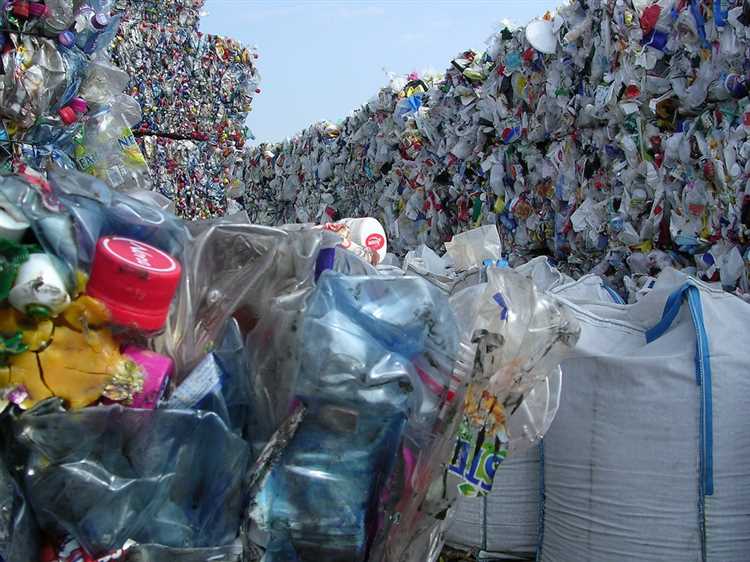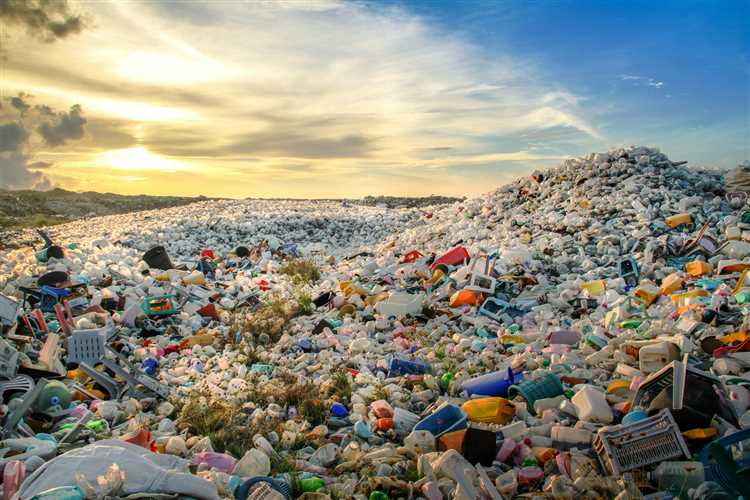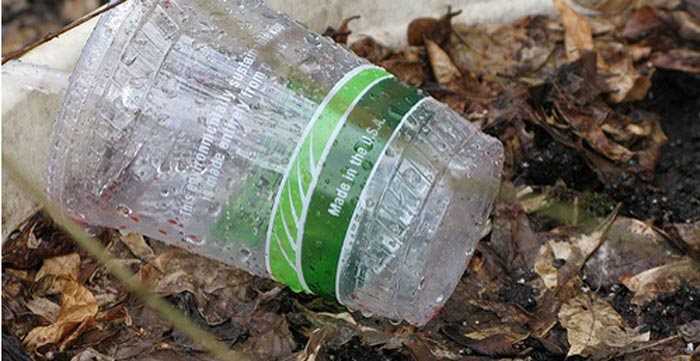
In recent years, the issue of plastic waste has become a global concern. With the amount of plastic being produced and consumed increasing year after year, finding sustainable solutions to dispose of this waste has become essential. One common method of waste disposal is burying it in landfills. However, the consequences of burying plastic waste are far-reaching and have a significant environmental impact.
Plastic is known for its durability, which is both a blessing and a curse. On one hand, it allows us to use plastic products for longer periods of time. On the other hand, it means that plastic waste can take hundreds of years to decompose. When buried in landfills, plastic waste can remain intact for centuries, slowly releasing harmful chemicals into the surrounding environment.
The long-term effects of burying plastic waste are still being studied, but initial findings are alarming. The chemicals and microplastics released from buried plastic waste can contaminate soil, water sources, and even the air we breathe. These pollutants not only harm wildlife and ecosystems, but they can also find their way into the food chain, posing a risk to human health.
Furthermore, burying plastic waste has another detrimental effect on the environment: it contributes to greenhouse gas emissions. As plastic breaks down over time, it releases methane, a potent greenhouse gas that contributes to climate change. The more plastic waste is buried, the more methane is released into the atmosphere, exacerbating the global warming crisis we are already facing.
- Plastic waste in the environment
- Negative effects on ecosystems
- Pollution of water sources
- Threat to marine life
- Impact on ecosystems
- Soil contamination and its consequences
- Current Efforts and Solutions:
- 1. Recycling and waste reduction:
- 2. Remediation techniques:
- Long-term environmental and human health impacts
- Environmental impacts
- Human health impacts
- Q&A
- What is the environmental impact of burying plastic waste?
- How does burying plastic waste contaminate soil and groundwater?
- What are the long-term effects of burying plastic waste?
- How does burying plastic waste harm wildlife?
- Can burying plastic waste have any positive effects on the environment?
- What are the environmental impacts of burying plastic waste?
Plastic waste in the environment
Plastic waste has become a major environmental issue worldwide. The improper disposal and accumulation of plastic waste have led to severe consequences for the environment, wildlife, and human health.
Plastic waste can end up in various ecosystems, including oceans, rivers, forests, and even urban areas. It is estimated that around 8 million metric tonnes of plastic waste enter the oceans every year. This plastic waste, once in the environment, takes hundreds of years to decompose, if at all.
The presence of plastic waste in the environment has detrimental effects on wildlife. Animals can mistake plastic waste for food and ingest it, leading to suffocation, digestive problems, and ultimately death. Marine animals, such as seabirds, turtles, and whales, are particularly at risk due to their high exposure to plastic in the oceans. In addition, plastic waste can entangle animals, causing injury, hindering their movement, and reducing their ability to hunt, reproduce, or defend themselves.
Furthermore, plastic waste can contaminate soil and water, posing risks to human health. When plastic breaks down into microplastics, it can be ingested by organisms and enter the food chain, potentially reaching humans through the consumption of contaminated seafood and water. Studies have shown that microplastics can accumulate in the human body, and their long-term health effects are still largely unknown.
In addition to its impact on wildlife and human health, plastic waste in the environment also contributes to the overall pollution and degradation of ecosystems. Plastic debris can alter habitats, smother plant life, and disrupt the balance of marine, freshwater, and terrestrial ecosystems. It can also release harmful chemicals into the environment, further contaminating natural resources and affecting biodiversity.
Addressing the issue of plastic waste in the environment requires a multi-faceted approach, including reducing plastic consumption, improving waste management systems, promoting recycling and reuse, and raising awareness about the environmental consequences of plastic pollution. By taking action, we can mitigate the long-term effects of plastic waste and protect our environment for future generations.
Negative effects on ecosystems
The burial of plastic waste has significant negative effects on ecosystems. Plastic waste that ends up in ecosystems such as oceans, rivers, and forests can have dire consequences for the plants and animals that live there.
One of the primary effects of plastic waste on ecosystems is the disruption of food chains and the overall balance of ecosystems. Marine animals, for example, may mistake small pieces of plastic for food and ingest them. This can lead to blockages in their digestive systems, malnutrition, and even death. As a result, the loss of these marine animals can have a cascading effect on the entire food chain, leading to imbalances and ecosystem collapse.
Plastic waste can also have physical impacts on ecosystems. As plastic waste accumulates in water bodies, it can create hazards for aquatic life. Large pieces of plastic debris can entangle aquatic animals, making it difficult for them to swim, hunt, and reproduce. Additionally, plastic can act as a vector for invasive species, as organisms can attach themselves to floating plastic and travel to new ecosystems, disrupting native species and biodiversity.
Furthermore, the long-term effects of plastic waste on ecosystems are still being studied, but they are likely to be significant. Plastic is not biodegradable and can persist in the environment for hundreds of years, slowly breaking down into smaller microplastics. These microplastics can be ingested by organisms at the base of the food chain and accumulate in higher-level predators, including humans. This accumulation of toxins can have severe health effects on animals and contribute to ecosystem instability.
In conclusion, the burying of plastic waste has negative effects on ecosystems, including the disruption of food chains, physical impacts on aquatic life, and the long-term accumulation of toxins in the environment. It is crucial to minimize plastic waste and find sustainable alternatives to protect ecosystems and the biodiversity they support.
Pollution of water sources

One of the most significant consequences of burying plastic waste is the pollution of water sources. Plastic waste that ends up in landfills can seep into the ground and contaminate underground water reserves. This contaminated water can then infiltrate rivers, lakes, and other water bodies, leading to widespread pollution.
The presence of plastic waste in water sources has detrimental effects on aquatic ecosystems. Many marine organisms, such as fish, turtles, and seabirds, mistake plastic debris for food and ingest it. This can lead to blockages in their digestive systems, malnourishment, and ultimately death. Additionally, the chemicals present in plastic can also leach into the water, posing a threat to the health of aquatic organisms.
Plastic pollution in water sources also has negative impacts on human health. Contaminated water can enter the human food chain through the consumption of contaminated fish and seafood. The chemicals present in the plastic can accumulate in the bodies of humans, potentially causing various health issues ranging from hormonal disruptions to cancer.
- Plastic waste in water sources also affects the quality of drinking water. Contaminated water can make its way into the public water supply, endangering the health of communities.
- The presence of plastic debris in water bodies also affects recreational activities such as swimming and boating. It not only detracts from the natural beauty of these environments but also poses a safety risk, as people can get entangled in or injured by the plastic waste.
- Moreover, the pollution of water sources by plastic waste exacerbates the already pressing issue of water scarcity. As the available sources of clean water become polluted, the access to safe drinking water becomes limited, putting further strain on already water-stressed regions.
In conclusion, the burial of plastic waste has severe consequences for water sources. It leads to pollution, negatively impacts aquatic ecosystems and human health, affects the quality of drinking water, hinders recreational activities, and aggravates water scarcity. It is imperative to address this issue by reducing plastic consumption, promoting recycling, and implementing proper waste management systems to protect our water sources and preserve the health of our planet.
Threat to marine life
Plastic waste that is buried, particularly in coastal areas, represents a major threat to marine life. Marine animals, such as turtles, dolphins, whales, and seabirds, often mistake plastic debris for food. This can have devastating consequences for their health and survival.
When ingested, plastic can cause internal injuries and blockages in the digestive systems of marine animals, leading to malnutrition and starvation. The chemicals present in plastic, such as bisphenol A (BPA) and phthalates, can leach into the tissues of marine organisms, affecting their hormonal balance and reproductive systems.
The entanglement of marine animals in plastic waste is another significant issue. Fishing nets, ropes, and other discarded plastic materials can become traps for animals, impairing their movement and leading to injuries or death. This is especially problematic for marine mammals and sea turtles, which often become entangled in abandoned fishing gear.
Impact on ecosystems
The threat to marine life posed by buried plastic waste extends beyond individual species. Plastic debris can disrupt entire ecosystems and alter food chains. For example, when predators consume contaminated prey, the toxins present in the ingested plastic can accumulate and become more concentrated as they move up the food chain. This bioaccumulation of toxins can have long-term implications for the health of marine ecosystems.
Furthermore, the presence of plastic waste in the ocean can alter the behavior and habitat preferences of marine organisms. For instance, coral reefs, which are vital ecosystems that support abundant marine life, can be damaged or destroyed when plastic debris becomes entangled in them or smothers them.
Overall, the impacts of burying plastic waste on marine life and ecosystems are wide-ranging and severe. Urgent action is needed to reduce the amount of plastic waste being generated, improve waste management systems, and promote sustainable alternatives to plastics.
Soil contamination and its consequences
Plastic waste buried in soil has become a significant environmental concern, with potential consequences that reach far beyond the immediate area of disposal. The presence of plastic in soil can lead to soil contamination, which poses a threat to both soil health and the surrounding ecosystem.
Impact on Soil Health:
Plastic waste buried in soil can impede the natural processes necessary for healthy soil. The presence of plastics can prevent water infiltration, hinder the exchange of gases, and impede the movement of nutrients within the soil profile. As a result, the overall fertility and productivity of the soil can be compromised.
Besides physical barriers, the chemical composition of plastic can also contaminate the soil. Some plastics contain additives that can leach into the surrounding soil, releasing harmful substances. These substances can disrupt the balance of microorganisms, reduce the activity of beneficial soil bacteria, and even inhibit plant growth.
Ecological Consequences:
The contamination of soil with plastic waste can have far-reaching ecological consequences. Plastic debris can be ingested by soil-dwelling organisms such as earthworms, beetles, and microorganisms, leading to internal injuries, reduced reproductive capabilities, and overall population decline.
Furthermore, plastic contamination can disrupt the food chain and impact the entire ecosystem. Predatory animals that feed on contaminated organisms can accumulate plastic particles, leading to bioaccumulation and biomagnification. This not only affects the health of these animals but also increases the likelihood of plastic entering the human food chain through the consumption of contaminated organisms.
Current Efforts and Solutions:
Awareness about the consequences of burying plastic waste in soil has led to increased efforts to minimize and manage plastic waste. Some initiatives include:
1. Recycling and waste reduction:

Promoting recycling programs and reducing plastic waste at the source can help minimize the amount of plastic that ends up in landfills or is buried in soil. By prioritizing sustainable alternatives and adopting a circular economy approach, the environmental impact of plastic waste can be significantly reduced.
2. Remediation techniques:
Remediation techniques such as bioremediation and phytoremediation are being explored to address soil contamination caused by buried plastics. These techniques use microorganisms or plants to break down or absorb contaminants, helping to restore the health of contaminated soil.
In conclusion, the burying of plastic waste in soil has severe consequences, including soil contamination and detrimental effects on soil health and the surrounding ecosystem. Taking proactive measures such as reducing plastic waste and implementing effective remediation techniques can help mitigate these long-term environmental impacts.
Long-term environmental and human health impacts
The burial of plastic waste has significant long-term implications for both the environment and human health. As plastics take hundreds of years to decompose, the accumulation of buried plastic waste can have serious consequences.
Environmental impacts
One of the major long-term environmental impacts of burying plastic waste is the alteration of ecosystems. Plastic waste can release harmful chemicals into the soil and water, leading to water pollution and soil degradation. This pollution can affect the plants and animals that rely on these ecosystems, leading to a loss in biodiversity.
Furthermore, buried plastic waste can also pose a threat to marine life. Plastic particles can leach into the water and be consumed by marine organisms. This can lead to bioaccumulation, where toxins build up in the bodies of these organisms. As a result, plastic waste burial can contribute to the decline of marine species and disrupt ocean ecosystems.
Human health impacts
The burying of plastic waste also has long-term implications for human health. Plastic particles can enter the food chain through the contamination of crops and livestock. When consumed, these particles can affect human health, causing various health issues including endocrine disruption, reproductive problems, and even cancer.
In addition, buried plastic waste can also affect human health through the release of toxic chemicals into the environment. These chemicals can contaminate groundwater sources, posing risks to human populations that rely on these sources for drinking water.
In summary, burying plastic waste has far-reaching long-term impacts on both the environment and human health. It is crucial that alternative waste management strategies, such as recycling and reducing plastic usage, are implemented to mitigate these effects and protect the planet and its inhabitants.
Q&A
What is the environmental impact of burying plastic waste?
Burying plastic waste has several negative environmental impacts. It can contaminate soil and groundwater, release toxic chemicals into the environment, and harm wildlife. Plastic waste takes hundreds of years to decompose, so burying it can lead to long-term pollution and damage to ecosystems.
How does burying plastic waste contaminate soil and groundwater?
Burying plastic waste can contaminate soil and groundwater through a process called leachate. As plastic breaks down slowly, it releases chemicals into the soil and water, causing pollution. These chemicals can then seep into nearby bodies of water and contaminate them, posing a risk to both human health and the environment.
What are the long-term effects of burying plastic waste?
The long-term effects of burying plastic waste are significant. Plastic waste takes hundreds of years to decompose, so it remains in the environment for a very long time. This leads to long-term pollution and damage to ecosystems. It can also have impacts on human health, as the toxic chemicals released by plastics can enter the food chain and accumulate in the human body over time.
How does burying plastic waste harm wildlife?
Burying plastic waste can harm wildlife in several ways. Animals can mistake plastic for food and ingest it, leading to internal injuries or even death. Plastic waste can also entangle animals, making it difficult for them to move or find food. Additionally, the chemicals released by plastics can disrupt the hormonal balance of animals and have negative effects on their reproductive systems.
Can burying plastic waste have any positive effects on the environment?
Burying plastic waste is generally considered to have more negative than positive effects on the environment. While burying waste can help reduce the visual pollution associated with plastic litter, it does not address the underlying issue of excessive plastic production and consumption. Recycling and reducing plastic waste are more effective ways to mitigate the environmental impact of plastics.
What are the environmental impacts of burying plastic waste?
Burying plastic waste can have several environmental impacts. When plastics decompose in landfills, they release harmful chemicals into the soil and contaminate the groundwater. This can have negative effects on plants, animals, and the overall ecosystem. Additionally, burying plastic waste takes up valuable land space and contributes to the depletion of natural resources.